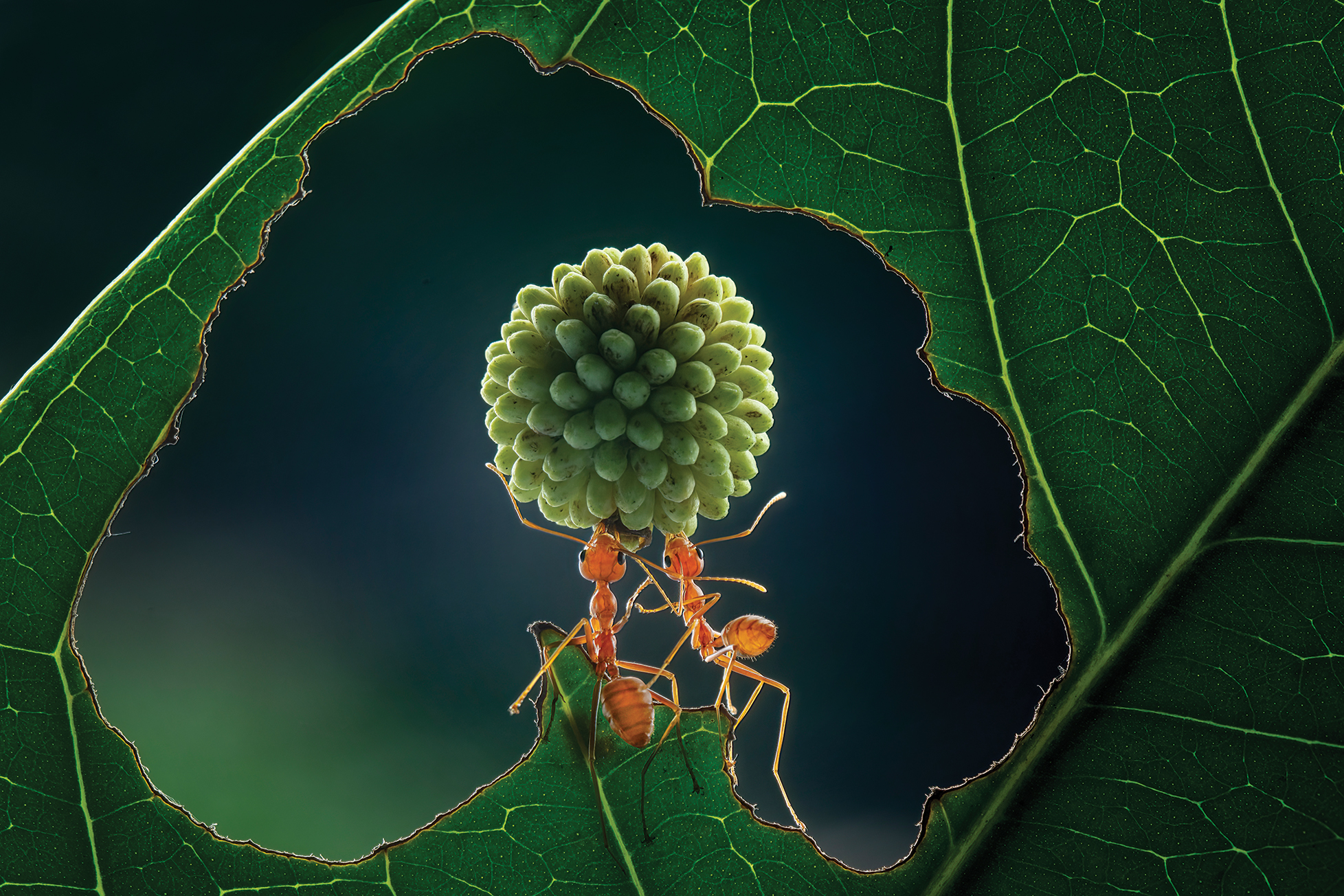"By zooming in on these tiny creatures, I hope to spark curiosity about the hidden beauty surrounding us"
Photographer Dzulfikri discusses his image, 'Ants in the Love Frame Leaf', revealing his visual strategies when showcasing natural interaction in the macro world

The work of Indonesia-based photographer, Dzulfikri, gives an insight into the lives of tiny creatures.
I had the chance to speak to Dzulfikri about how his stunning photo, Ants in the Love Frame Leaf (above) was taken, and why it works.
1. Microcosmic exploration
“This image provides a glimpse into an intricate micro world that often goes unnoticed. By zooming in on these tiny creatures, I hope to spark curiosity about the hidden beauty surrounding us,” he says.
To achieve rich details and sharpness, Dzulfikri used a macro lens and a wide aperture. “This helped me to focus on the ants while blurring the background. Capturing sharp details on subjects this small poses a challenge. I overcame this by focusing on the ant’s eye and using a support to prevent camera shake.”
2. Natural interaction
To capture a moment that represents cooperation in the macro world, Dzulfikri observed the creatures interacting, requiring lots of patience and a keen eye. “Observing their behavior and waiting for the right moment to click the shutter allowed me to document their natural actions.”
In this image, he also shows the context, capturing the ants within their natural environment. “Their interaction with the fruit could hint at their contribution to seed dispersal, representing their role within the ecosystem.”
3. Clear visual strategy
“The composition adheres to the rule of thirds, placing the ants and the fruit at visually engaging points to create a dynamic balance. The soft sunlight created subtle shadows that emphasized the textures and the appearance of the ants. I added flash to fill in the light as naturally as possible.”
The best camera deals, reviews, product advice, and unmissable photography news, direct to your inbox!
In post-production, he focused on the color and contrast, enhancing the brightness of the fruit while keeping the ants looking natural. “The goal was to boost the impact without sacrificing authenticity.”
4. Telling a story
“This image serves as a storyteller, conveying the narrative of cooperation, teamwork and survival within the tiny world of ants. Such stories can evoke empathy and understanding, fostering a connection to the natural world,” says Dzulfikri. His choice of a frame-in-frame setting offers a visual gateway in which to contemplate the microcosmic marvels.

For nearly two decades, Indonesia-based Dzulfikri has been captivated by macro photography and the intricate beauty of portrait fine art. Through his lens, Dzulfikri unravels hidden worlds and emotions, freezing moments in time. The art of photography grants him a unique way to connect with the world, channeling inspiration into every frame he captures.
“As a photographer, it’s important to emphasize ethical practices when working with wildlife. Ensuring that the interactions we capture don’t disturb or harm the subjects is crucial and contributes to responsible nature photography.”
Tech details
Camera: Canon EOS 5D Mark IV
Lens: Canon EF 100mm f/2.8L Macro IS USM
Accessories: Flash
Aperture: f/4
Shutter speed: 1/120 sec
ISO: 250
This article originally appeared in Digital Photographer, a monthly magazine, and the kitbag essential for pros, enthusiasts, and amateurs alike!
Inside, you'll find practical guides, shooting tips, and techniques from working photographers, plus all the latest industry news.
Take a look at the best cameras for macro photography, along with the best macro lenses.

Kim is a photographer, editor and writer with work published internationally. She holds a Master's degree in Photography and Media and was formerly Technique Editor at Digital Photographer, focusing on the art and science of photography. Blending technical expertise with visual insight, Kim explores photography's time-honored yet ever-evolving role in culture. Through her features, tutorials, and gear reviews, she aims to encourage readers to explore the medium more deeply and embrace its full creative potential.


